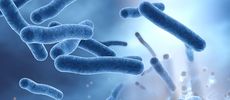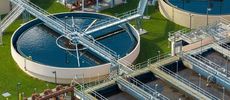Deteriorating Water Quality Could Impact Europeans' Health


In May 2024, the European Environment Agency (EEA) published a report on the health risks posed by climate-related floods, droughts, and declining water quality. The report, titled, "Responding to climate change impacts on human health in Europe," focuses on the ways that water-related impacts of climate change affect health and well-being, resulting in deaths, injuries, outbreaks of infectious diseases, and mental health issues.
Senior citizens, children, immunocompromised individuals, lower-income groups, farmers, and emergency service teams are particularly at risk. In addition, about 30% of people in southern Europe live with permanent water stress—when the water demand exceeds the available amount during a certain period or when poor quality restricts its use.
The report emphasizes the need to implement existing EU legislation—various climate, water, and health policies—more broadly and systematically. National, state, and local governments must roll out solutions to protect lives, prevent adverse health outcomes, and increase well-being.
Here's a closer look at the critical risks to water quality that require action and how water testing laboratories can make a difference in public health.
Harmful Pathogen Growth
Water temperatures in major European lakes and rivers have risen about 1.8°F to 5.4°F (about 1°C to 3°C) over the last century. With less water flowing in summer, the increase in temperature is expected to accelerate—encouraging pathogen growth and increasing the risk of waterborne diseases, like Legionnaires' disease, caused by various strains of Legionella spp., and vibriosis, contracted by contact with Vibrio bacteria.
Warming temperatures pose particular risks in countries where the public water supply depends on surface water. In Sweden, for example, surface water comprises about 50% of water production. That could call for technological solutions to cool surface water, such as artificial infiltration of rain and river water in subsurface aquifers, to lower the risk of infections.
Rising temperatures also contribute to heavy rainfall events that lead to contaminated runoff and sewage overflows and increase the concentration of harmful pathogens. In addition to pathogens, warmer waters can increase the production of dangerous disinfection byproducts that can be identified through water testing.
Higher Pollutant Concentrations
Dry periods leading to low water flows can also concentrate pollutants, requiring additional water testing and treatment. Agricultural runoff leads to phosphorous and nitrogen discharge and puts water bodies at particular risk. The combination of rising temperatures and nutrient-rich waters can contribute to blue-green algae (cyanobacteria) blooms, creating hazards for water used for recreation and drinking.
The EU has several directives with measures to reduce the discharge of these nutrients into water bodies and prevent blooms that decrease oxygen in water, leading to illness and death among wildlife and skin, gastrointestinal, and lung irritation in humans.
Saltwater Intrusion in Coastal Areas
The impact of sea-level rise on low-lying areas can cause saltwater to intrude into groundwater and even surface water supplies, causing various damaging health effects. Too much salt can increase risks of high blood pressure, preeclampsia in pregnant women, and infant mortality. Water quality testing is essential to ensure safe levels of saline, especially in private wells and for untreated water.
Drinking water facilities may need to adjust and increase treatment and find new water intakes or alternate sources of freshwater. In the worst-case scenario, saltwater intrusion may render groundwater wells unusable and surface waters unable to supply drinking water utilities. The damage can last for decades.
Emerging Risks
The report also discusses emerging risks, including the mobilization of chemicals and possibly pathogens due to thawing permafrost in northern Europe. Melting of permafrost releases trace elements, including metals and ions, into water sources, causing climate health risks with severe consequences, including cancer and cardiovascular disease.
Permafrost is the planet's largest reservoir of mercury and can contaminate drinking water and food and accumulate in fish and sea mammals that humans later consume. In addition, thaw may release pathogens that could still be active.
Acting on these water-related risks requires climate change to be incorporated into the health policies of European states and at local levels, according to the report. That will require raising public awareness in the short term and implementing infrastructure improvements and nature-based solutions over the long term. The work of water testing labs will be essential to recognize the water quality impacts of climate change and ensure equitable solutions that provide everyone with safe water for drinking and recreation as the climate warms.






